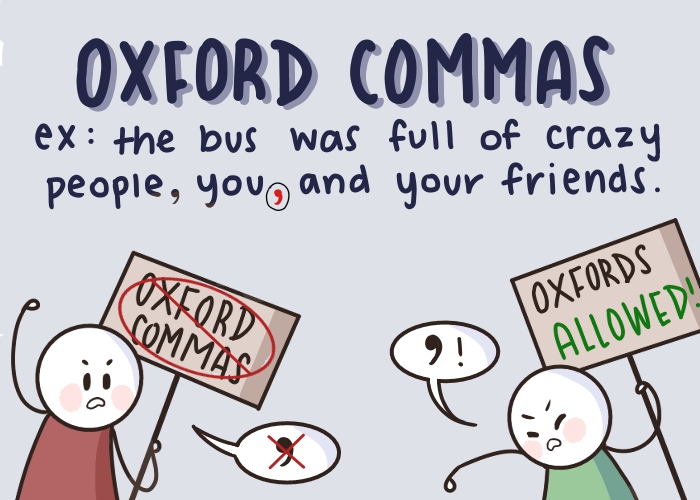In the world of writing, few punctuation marks spark as much debate as the Oxford comma. Also known as the serial comma, this tiny mark appears before the final “and” or “or” in a list of three or more items. For example:
“We bought apples, oranges, and bananas.”
The comma after “oranges” is the Oxford comma.
But is it necessary? Does it matter for clarity, or is it an outdated practice? Let’s break down what the Oxford comma is, its history, benefits, controversies, and why you might want to use it in your writing.
What Is the Oxford Comma?
The Oxford comma is the final comma in a series. It is called the “Oxford comma” because it was traditionally used by printers, readers, and editors at the Oxford University Press.
Example with Oxford comma:
- I love my parents, Lady Gaga, and Superman.
Example without Oxford comma:
- I love my parents, Lady Gaga and Superman.
In the second sentence, the lack of an Oxford comma humorously suggests your parents are Lady Gaga and Superman.
A Brief History of the Oxford Comma
The Oxford comma dates back to the early 20th century, when it was advocated by Oxford University Press to ensure clarity in academic and technical writing. Over time, it became known as a hallmark of clear, precise English, particularly in British and American academic writing.
Why Does the Oxford Comma Matter?
1️⃣ Clarity and Avoiding Ambiguity
The most significant argument in favor of the Oxford comma is preventing misinterpretation.
Example:
- Without: “I dedicate this book to my parents, Ayn Rand and God.”
- With: “I dedicate this book to my parents, Ayn Rand, and God.”
The Oxford comma clarifies that your parents are not Ayn Rand and God.
2️⃣ Consistency in Lists
Using the Oxford comma consistently makes your writing uniform and easier to follow.
3️⃣ Legal Importance
The Oxford comma has even impacted court cases. In 2017, a $10 million lawsuit regarding overtime pay in Maine was decided partly due to the absence of an Oxford comma in a state law, demonstrating its real-world importance.
Arguments Against the Oxford Comma
While many writers and style guides advocate for its use, others consider it unnecessary.
- Associated Press (AP) style generally omits the Oxford comma unless it is needed for clarity.
- Critics argue it can make sentences look cluttered or that context usually makes meaning clear.
Style Guides and the Oxford Comma
✅ Use Oxford Comma:
- Oxford University Press
- Chicago Manual of Style
- MLA Style
- APA Style
❌ Usually Omit Oxford Comma:
- Associated Press (AP) Style
- Some journalistic writing
If you write for academic, business, or technical audiences, using the Oxford comma is typically advisable.
Should You Use the Oxford Comma?
It depends on your audience and the style guide you follow. If you want to prioritize clarity and prevent legal or professional confusion, using the Oxford comma is wise.
In summary:
✅ Improves clarity
✅ Prevents misinterpretation
✅ Ensures consistency in complex lists
Fun Examples of Oxford Comma Importance
1️⃣ “We invited the strippers, JFK and Stalin.”
Without the Oxford comma, it sounds like JFK and Stalin are the strippers.
With Oxford comma:
“We invited the strippers, JFK, and Stalin.”
2️⃣ “My heroes are my parents, Superman and Wonder Woman.”
Without:
Your parents are Superman and Wonder Woman.
With:
“My heroes are my parents, Superman, and Wonder Woman.”
Conclusion
The Oxford comma is a small but powerful tool for clarity in your writing. While debates around its use continue, understanding its role helps you make informed decisions based on your audience, context, and writing goals.
Whether you’re drafting a blog, academic paper, legal document, or creative piece, remember:
Clarity always matters. The Oxford comma helps you achieve it.





